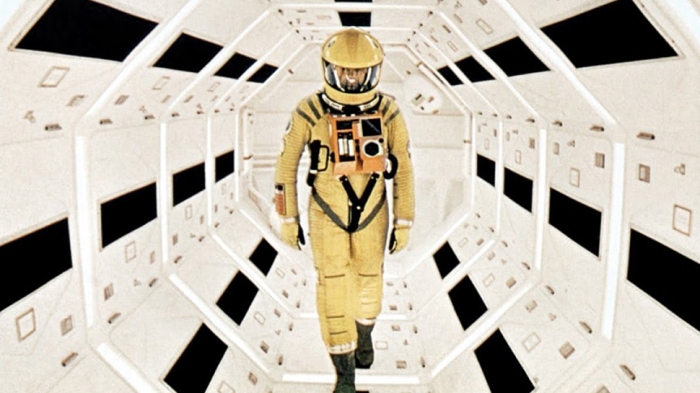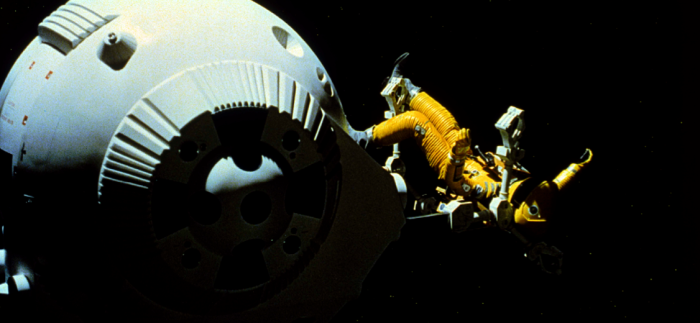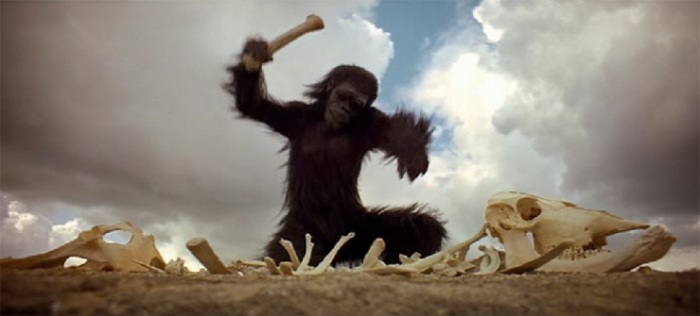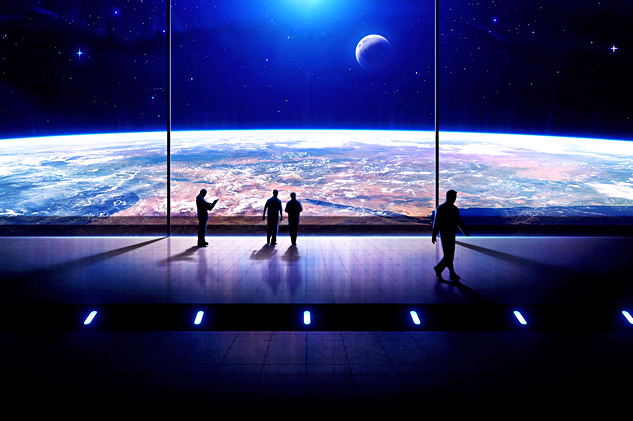Humanity finds a mysterious, obviously artificial object buried beneath the Lunar surface and, with the intelligent computer H.A.L. 9000, sets off on a quest.
IMDb Rating : 8.3/10
Director: Stanley Kubrick
Writers : Stanley Kubrick (screenplay),
Arthur C. Clarke (screenplay)
Release Date: 12 May 1968
Awards
Won 1 Oscar
Another 13 wins & 10 nominations.
Technologies in 2001: A Space Odyssey
2001 is, according to four NASA engineers who based their nuclear-propulsion spacecraft design in part on the film’s Discovery One, “perhaps the most thoroughly and accurately researched film in screen history with respect to aerospace engineering”. Several technical advisers were hired for 2001, some of whom were recommended by co-screenwriter Arthur C. Clarke, who himself had a background in aerospace. Advisors included Marshall Spaceflight Center engineer Frederick I. Ordway III, who worked on the film for two years,and I. J. Good, whom Kubrick consulted on supercomputers because of Good’s authorship of treatises such as “Speculations Concerning the First Ultraintelligent Machine” and “Logic of Man and Machine”. Dr. Marvin Minsky, of MIT, was the main artificial intelligence adviser for the film.

2001 accurately presents outer space as not allowing the propagation of sound, in sharp contrast to other films with space scenes in which explosions or sounds of passing spacecraft are heard. 2001’s portrayal of weightlessness in spaceships and outer space is also more realistic. Tracking shots inside the rotating wheel providing artificial gravity contrast with the weightlessness outside the wheel during the repair and Hal disconnection scenes. (Scenes of the astronauts in the Discovery pod bay, along with earlier scenes involving shuttle flight attendants, depict walking in zero-gravity with the help of velcro-equipped shoes labeled “Grip Shoes”). Other aspects that contribute to the film’s realism are the depiction of the time delay in conversations between the astronauts and Earth due to the extreme distance between the two (which the BBC announcer explains have been edited out of the broadcast), the attention to small details such as the sound of breathing inside the spacesuits, the conflicting spatial orientation of astronauts inside a zero-gravity spaceship, and the enormous size of Jupiter in relation to the spaceship.

The general approach to how space travel is engineered is highly accurate; in particular, the design of the ships was based on actual engineering considerations rather than attempts to look aesthetically “futuristic”.Many other science-fiction films give spacecraft an aerodynamic shape, which is superfluous in outer space (except for craft such as the Pan Am shuttle that are designed to function both in atmosphere and in space). Kubrick’s science advisor, Frederick Ordway, notes that in designing the spacecraft “We insisted on knowing the purpose and functioning of each assembly and component, down to the logical labeling of individual buttons and the presentation on screens of plausible operating, diagnostic and other data.”Onboard equipment and panels on various spacecraft have specific purposes such as alarm, communications, condition display, docking, diagnostic, and navigation, the designs of which relied heavily on NASA’s input. Aerospace specialists were also consulted on the design of the spacesuits and space helmets. The space dock at Moon base Clavius shows multiple underground layers which could sustain high levels of air pressure typical of Earth. The lunar craft design takes into account the lower gravity and lighting conditions on the Moon. The Jupiter-bound Discovery is meant to be powered by a nuclear reactor at its rear, separated from the crew area at the front by hundreds of feet of fuel storage compartments. Although difficult to be recognized as such, actual nuclear reactor control panel displays appear in the astronaut’s control area.
The suspended animation of three of the astronauts on board is accurately portrayed as worked out by consulting medical authorities. Such hibernation would likely be necessary to conserve resources on a flight of this kind, as Clarke’s novelization implies.
A great deal of effort was made to get the look of the lunar landscape right, based on detailed lunar photographs taken from observatory telescopes. The depiction of early hominids was based on the writings of anthropologists such as Louis Leakey.

GOOFS

When Bowman reenters the ship, he is exposed to vacuum for no more than 10 seconds before operating the repressurization valve. Scientific evidence shows that this would indeed be survivable without grievous harm, notwithstanding the sensational depictions in other movies.

